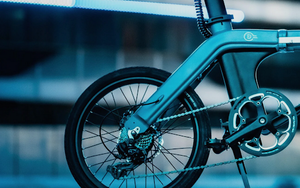Can You Ride Electric Bikes on the Road?
May 31, 2024
List of Contents
- Can you ride electric bikes on the road?
- Understanding electric bikes
- Legal aspects of riding electric bikes on the road
- Safety measures for riding electric bikes on the road
- Benefits of riding electric bikes on the road
- Common misconceptions about electric bikes
- Electric bike statistics
- Conclusion
Can You Ride Electric Bikes on the Road?
In recent years, electric bikes have gained popularity as a convenient and eco-friendly mode of transportation. However, many people wonder whether it is legal and safe to ride electric bikes on the road. In this article, we will delve into the world of electric bikes, explore their key features, discuss the legal aspects of riding them, outline safety measures, highlight their benefits, and address common misconceptions.
Understanding Electric Bikes
What is an Electric Bike?
An electric bike, also known as an e-bike, is a bicycle equipped with an electric motor that assists the rider's pedalling. This motor is powered by a rechargeable battery, providing an extra boost to make pedalling easier, especially uphill or against strong headwinds. Electric bikes come in various designs and styles, ranging from traditional bicycles with added electric components to sleek and modern designs specifically engineered for electric propulsion.
Electric bikes have gained popularity in recent years as a sustainable and convenient mode of transportation. They offer an eco-friendly alternative to traditional vehicles, reducing carbon emissions and promoting a healthier lifestyle. Many cities around the world have embraced electric bikes as a solution to traffic congestion and air pollution, with dedicated bike lanes and rental services making them more accessible to the public.

Key Features of Electric Bikes
Electric bikes typically feature a combination of pedal-assist and throttle modes. In pedal-assist mode, the motor only activates when the rider pedals, providing the necessary assistance to make pedalling less strenuous. The Ado A20 XE Electric Bike has a G-Drive Pedal Assist Control System which quickly receives signals , detects, collects and analysis the vehicle to respond to different road situations.
On the other hand, the throttle mode allows riders to engage the motor without pedalling, similar to a motorcycle or scooter. It is important to note that electric bikes come with speed limits imposed by law, typically ranging from 20 to 28 miles per hour. The Argento Omega Electric Bike goes 15.5 mph.
Another key feature of electric bikes is regenerative braking, which helps recharge the battery while riding. When the brakes are applied, the motor switches to generator mode, converting the kinetic energy of the moving bike back into electricity. This feature not only extends the range of the electric bike but also improves overall energy efficiency, making it a more sustainable transportation option.

Legal Aspects of Riding Electric Bikes on the Road
Navigating the legal landscape of electric bike usage on UK roads is crucial for riders to ensure both their safety and compliance with regulations. In the United Kingdom, electric bikes are subject to specific laws that distinguish them from conventional bicycles. Understanding these legal aspects is paramount, as failure to comply can result in penalties or even legal consequences.
In the UK, electric bikes are classified based on their power and speed capabilities, with certain models requiring registration, insurance, and a valid licence to ride on public roads. Additionally, regulations regarding where e-bikes can be ridden, such as cycle lanes or roads, must be adhered to.
The UK government states that electric bikes meeting the EAPC regulations can be ridden on the road without being taxed, licensed or insured.
Familiarising oneself with these legal intricacies ensures a smoother and more enjoyable riding experience while promoting safety and accountability for all road users.

Safety Measures for Riding Electric Bikes on the Road
Essential Safety Gear for Electric Bike Riders
When riding an electric bike on the road, it is important to prioritise safety by wearing appropriate gear. A properly fitting helmet is a must for protecting your head in case of accidents or falls. Additionally, reflective clothing, especially during nighttime rides, can increase your visibility to other road users. Gloves and knee/elbow pads might also provide additional protection, particularly if you are riding at higher speeds or on more challenging terrains.
Safe Riding Practices for Electric Bikes
To ensure a safe and enjoyable experience while riding an electric bike on the road, it is vital to follow safe riding practices. First and foremost, obey all traffic laws and regulations, just like any other road user. Stay vigilant, watch your surroundings, and use hand signals to indicate your intentions. When riding in groups or in traffic, maintain a safe distance from other vehicles to avoid accidents. Lastly, regularly check and maintain your electric bike, ensuring that the brakes, lights, and tires are in good working condition.

Benefits of Riding Electric Bikes on the Road
Positive Environmental Impact
Electric bikes offer numerous environmental benefits over traditional motor vehicles. They produce lower levels of greenhouse gas emissions, reducing carbon footprints and air pollution. Electric bikes also contribute to less noise pollution, creating a quieter and more pleasant urban environment. By opting for electric bikes as a means of transportation, individuals can make a significant positive impact on the environment.
Prompts a Healthy Lifestyle
Contrary to popular belief, riding an electric bike can still provide health and fitness benefits. While the motor assists with pedalling, it does not eliminate the physical effort entirely. Riding an electric bike still requires the use of muscles, particularly in the legs and core, leading to improved cardiovascular fitness and increased strength. Additionally, electric bikes encourage individuals to engage in active commuting, helping to combat sedentary lifestyles and promote a more active and healthy lifestyle overall.

Common Misconceptions About Electric Bikes
Despite the growing popularity of electric bikes, they still face common misconceptions and myths. One myth is that electric bikes are just for lazy individuals who do not want to pedal. In reality, electric bikes offer flexibility and accessibility to people of all fitness levels, making it easier for everyone to enjoy cycling.
Another myth is that electric bikes are dangerous. However, when ridden responsibly and with proper safety precautions, electric bikes are no more dangerous than traditional bicycles.
Addressing Concerns About Electric Bikes
Some concerns about electric bikes revolve around their impact on traffic congestion and the potential for accidents. However, studies have shown that electric bikes have minimal impact on traffic congestion, as they take up less space on the road and can be an alternative to car use, reducing overall traffic volume.
Additionally, while accidents can occur with any mode of transportation, proper education, adherence to traffic laws, and safe riding practices can help mitigate risks associated with electric bike usage.
Statistics of Electric Bikes
- A UK GOV study showed that 2 in 3 people knew very little about e-bikes.
- The electric bike market is projected to grow in value to $119.72 billion US dollars by 2030.
Conclusion
In conclusion, electric bikes can indeed be ridden on the road, given that riders adhere to relevant regulations and prioritise safety measures. Understanding the features, legal aspects, safety measures, and benefits of electric bikes is crucial for a smooth and enjoyable riding experience. By addressing misconceptions and concerns, we can promote electric bike usage as a sustainable, healthy, and convenient means of transportation in our daily lives.






